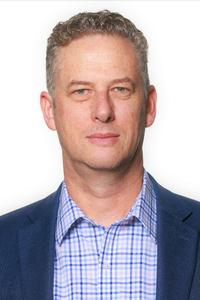CIO100 2018 #31-100 Gerard Naish, Ports of Auckland Ltd

Gerard Naish says the delivery of the Self-service Information Analytics (SIA) Programme at the Ports of Auckland has immensely helped the business teams to “visualise data, share discoveries, and collaborate in intuitive new ways”.
The programme aimed to empower the business with better visibility and control of their operations, processes and services, he says.
The main technology adopted by this programme is Microsoft Power BI, which offers a suite of business analytics tools to analyse data and share insights with greater speed, efficiency, and understanding.
“Our SIA Programme adopts a business-led self-service approach to deliver information analytics services to business teams. This approach aims to maximise the support of the selected technologies for agility, speed and user-friendly aspects in driving competitiveness and creating business value.”
“We encourage the business users to utilise standard governed data sources and leverage non-standard non-governed data such as industry statistics purchased from a third party.
The SIA Programme has been in full force since early 2017 and has brought significant benefits to the business, he says.
For example, as a team to pilot the delivery process of SIA Program, the engineering team has developed analytical reports presenting fuel consumptions by straddles.
With these reports, engineers can identify and investigate the problematic straddles that burn abnormally high volumes of fuels, and arrange necessary fixes to the problems.
Fixing the fuel loss potentially saves the company $15,000 to $20,000 per problematic straddle per year, he says.
“With better visibility and understanding of straddle faults patterns, engineers can more efficiently schedule the equipment maintenance in a pre-active manner.”
In another example, the engineering team is able to automate their pre-work order checking process through a portable app.
Engineers used to manually fill up a paper checklist form with a series of health and safety related questions before they conducted any on-site work. Then they had to manually transfer all hand-written information into an electronic spreadsheet for reporting purposes.
With the new app that can run on smartphones and tablets, engineers are removing paper checklists.
“It helps the team to establish a more efficient process, which increases the compliance of safety procedures. It also leads to new opportunities to improve engineering processes through the collected data,” says Naish.
He says at the Ports of Auckland a challenge for IT to support the digital transformation of the business is to integrate actionable insights with real-time operational data.
“To tackle this challenge, we innovated the ways of optimising data collection, transformation, enrichment, modelling, analytics and visualisation along our entire data value chain.
“Specifically, we delivered a series of apps with automatically triggered notification/approval/ synchronisation workflows to automate data collection and transformation tasks. This freed up business teams from time-consuming, labour-intensive, repetitive and prone-to-error data collection/processing manual processes.
“These apps are developed using Microsoft Azure cloud computing technologies. They can run on Windows, iOS, Android, Windows Phone, and in web browsers, and take advantage of the device’s capabilities such as location and camera.
“We also delivered a variety of cloud-based solutions designed specifically for enriching our business data through the integration with external sources such as marine traffic and weather data. This has laid a foundation for us to progress further in the forecasting and predictive analytics and maintenance space, Naish says.
Naish is a member of several committees and advisory boards across the Ports of Auckland. He meets regularly with executive members to present various roadmaps and strategies around technology.
“I am very proactive in engaging with various parts of the business and have focused on building strong relationships across the organisation,” he says.
During the Friday afternoon executive update meetings, which are open to the entire organisation, the team presents their IT strategy or some exciting initiatives they are undertaking in the analytics space.
“This year I have put considerable focus on the development of a business aligned IT strategy and roadmap,” says Naish. “Key to this has been assessing our existing technology assets and capabilities and developing our future technology direction.”
More specifically, the team developed a business capability model that provides an enterprise view of the port’s entire business capabilities.
“We overlaid this with our technology assets, each of which were scored from a business and technology viewpoint. This provides us with a clear line of sight between what we do as a business, what technology supports that, and what the state of that technology is,” says Naish.
Getting good at making decisions has been a vital career lesson for Naish.
“You are going to be making a lot of them so it is in your best interests to get as efficient at it as possible,” he says.
“Different decisions require different approaches to making them and you need to know what approach to apply where.
“You also need to be aware of how you’re perceived by others and be able to adjust your communication style accordingly based on the outcome you’re looking to achieve. Being in a leadership role where you have a wider range of stakeholders, you need to be on top of your game in this respect and be prepared to keep evolving.
“This also extends to fostering healthy debate about our direction so that people feel they’re part of the journey. If you do this, then executing on that is so much easier as people feel they’ve been part of the process in setting that direction,” says Naish.